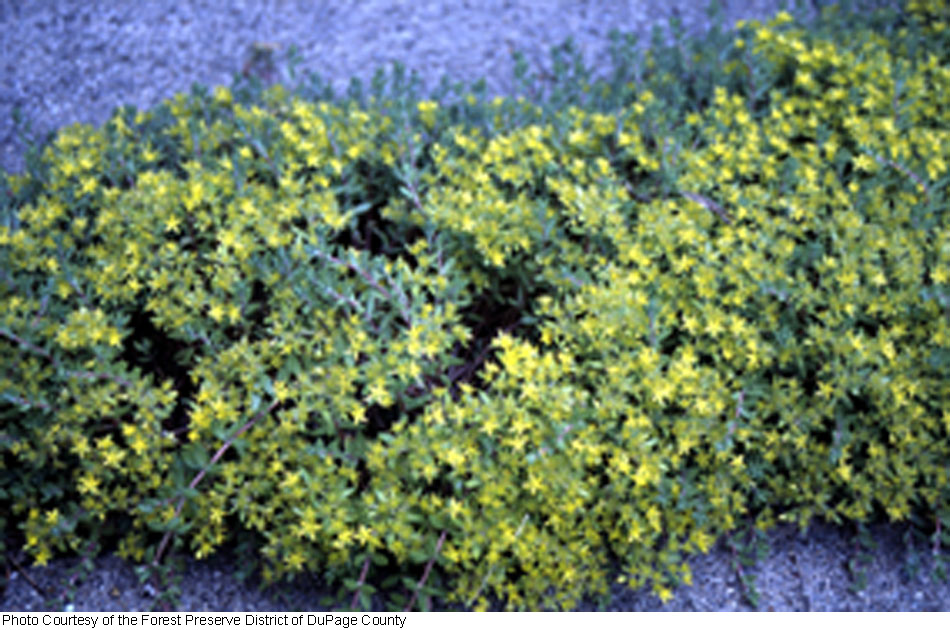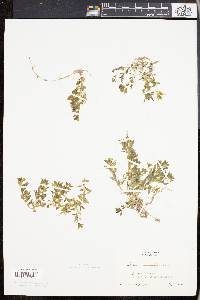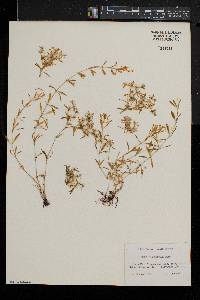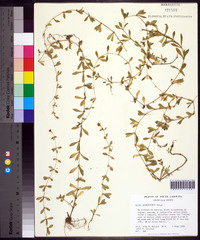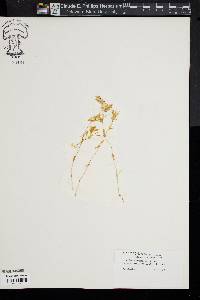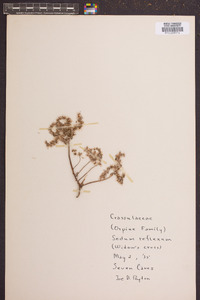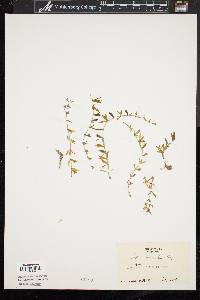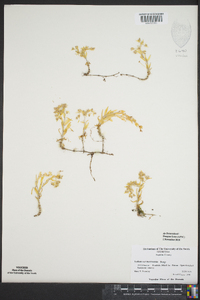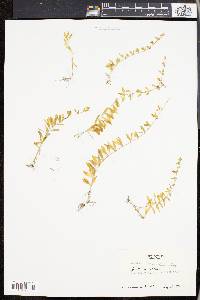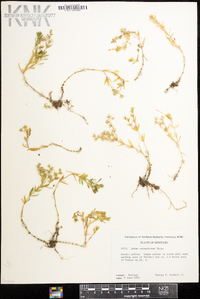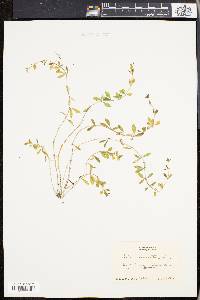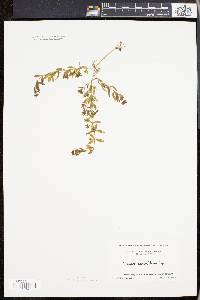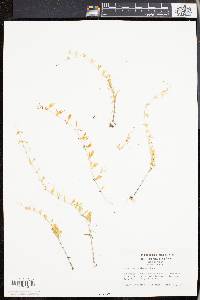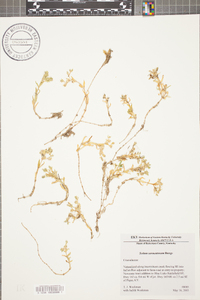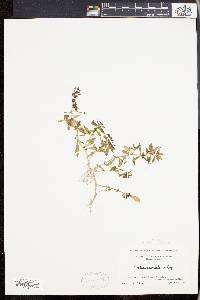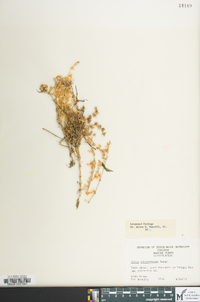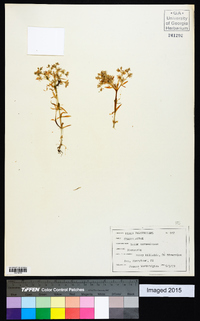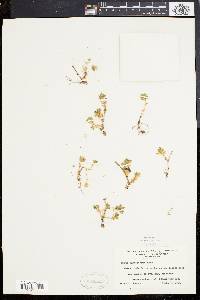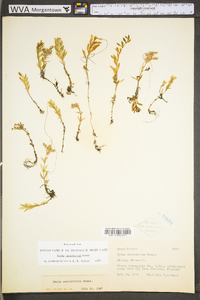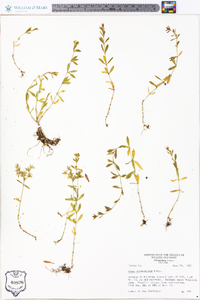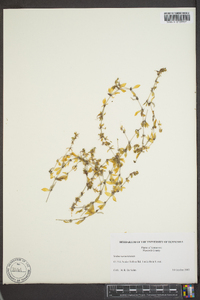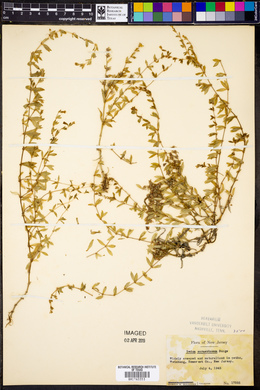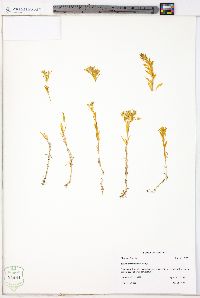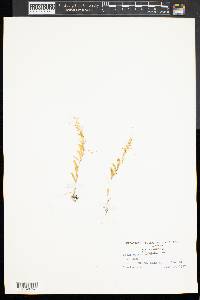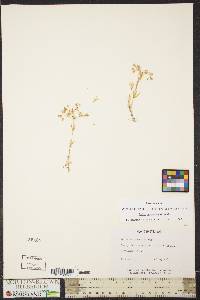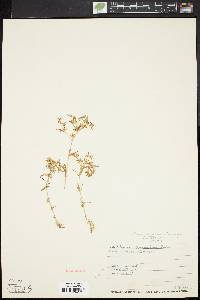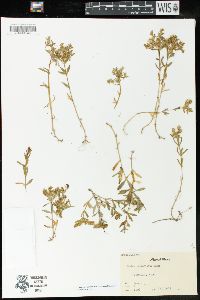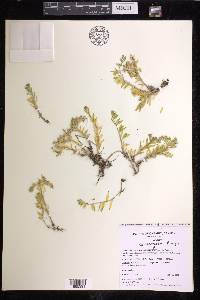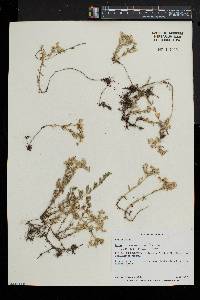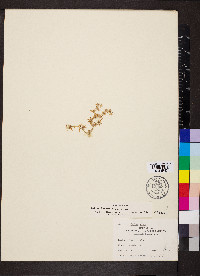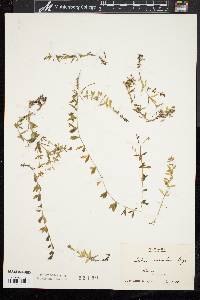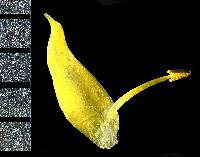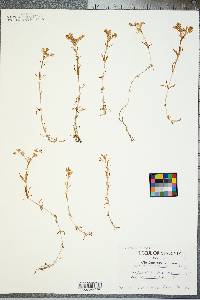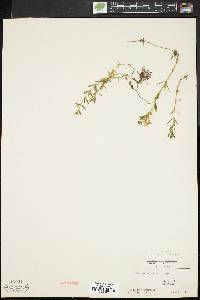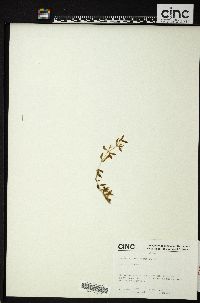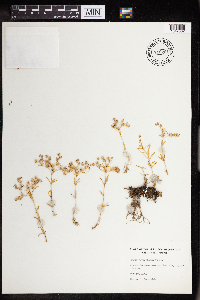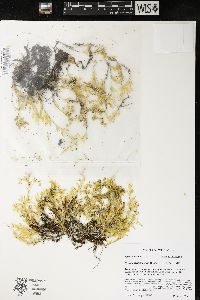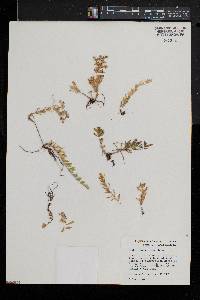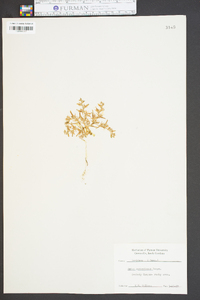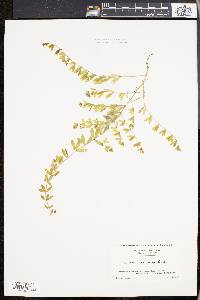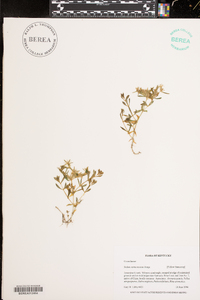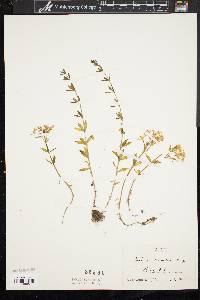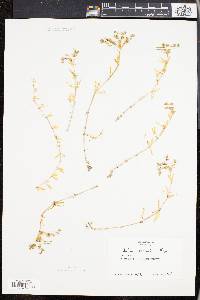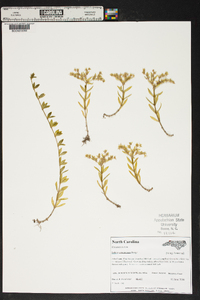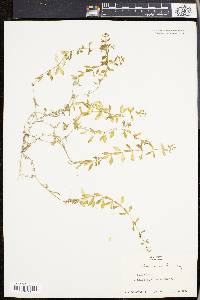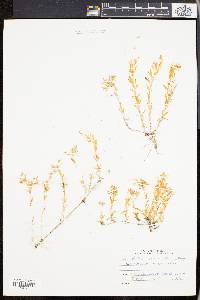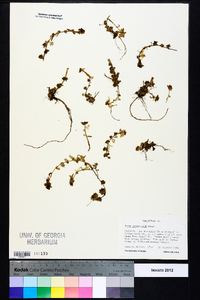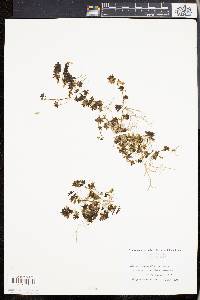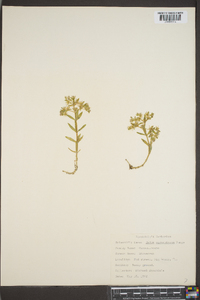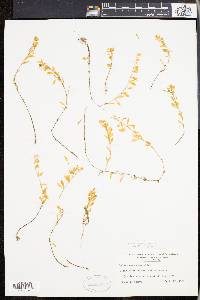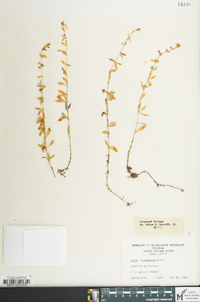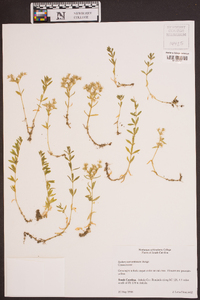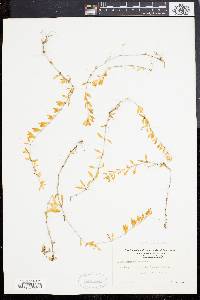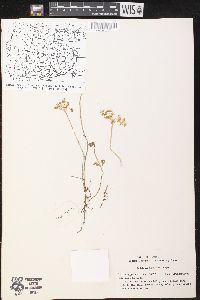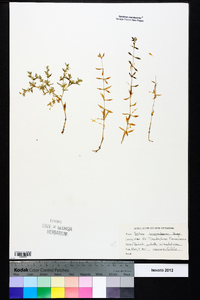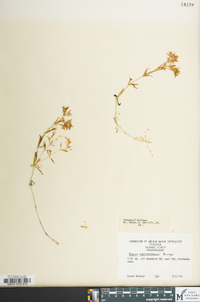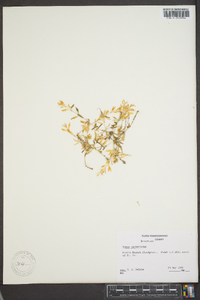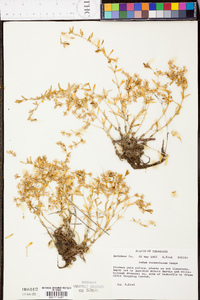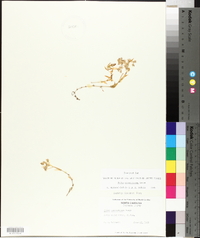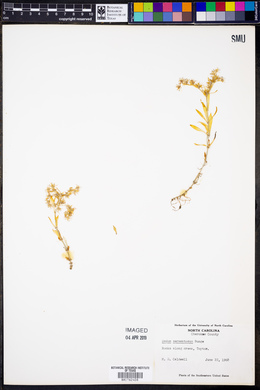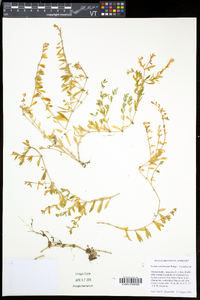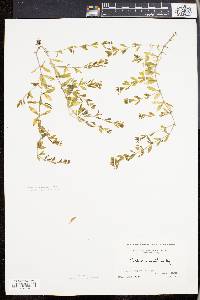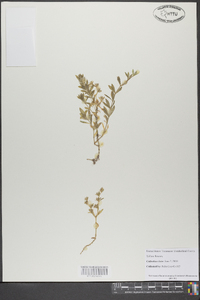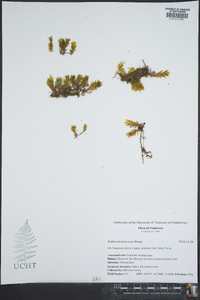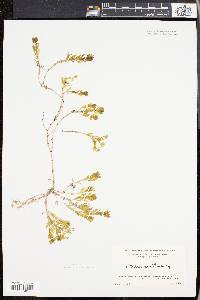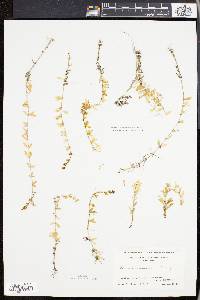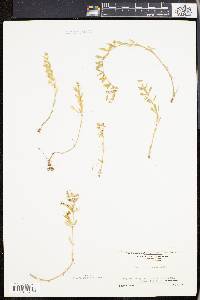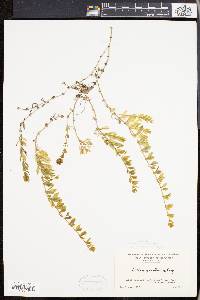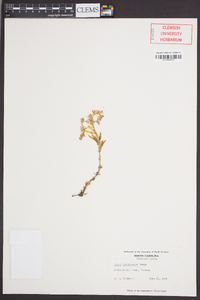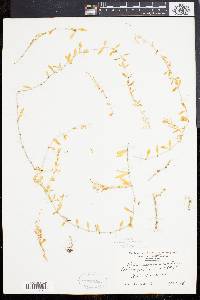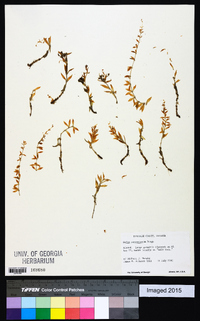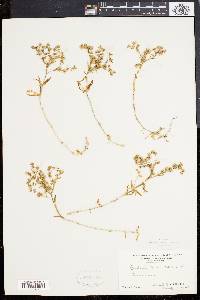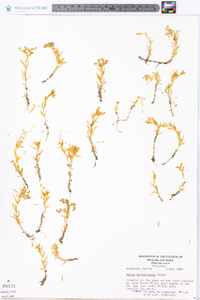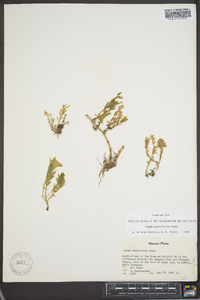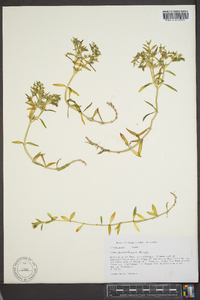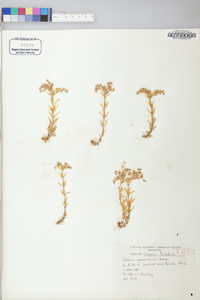Sedum sarmentosum
|
|
|
|
Family: Crassulaceae
Stringy Stonecrop, more...orpin sarmenteux
|
Herbs, perennial, mat-forming, glabrous. Stems creeping and ascending, branched, not bearing rosettes. Leaves in whorls of 3, spreading, sessile; blade pale yellowish green, not glaucous, narrowly rhombic-elliptic to widely lanceolate, subterete, 10-25 × 4-6 mm, base spurred, not scarious, apex subacute. Flowering shoots creeping or ascending, simple, 10-25 cm; leaf blades narrowly oblanceolate-elliptic, base short-spurred; offsets not formed. Inflorescences dense cymes or corymbs, 8-40-flowered, (1-)2-4-branched; branches spreading to widely ascending, sometimes forked; bracts similar to leaves, smaller. Pedicels absent or to 0.5 mm. Flowers 5-merous; sepals spreading, distinct basally, green, widely lanceolate to oblong, often unequal, 3.5-5 × 0.8-1.5 mm, apex acute or obtuse; petals spreading, slightly connate, yellowish, lanceolate to oblong, not carinate, 5-8 mm, apex long-mucronate; filaments yellow; anthers reddish; nectar scales orange, rectangular-spatulate. Carpels stellately patent in fruit, distinct, yellow-green. 2n = ca. 72. Flowering spring. Xeric rock outcrops; 0-500 m; introduced; Ont., Que.; Ala., Ark., Conn., D.C., Fla., Ga., Ill., Ind., Iowa, Ky., La., Maine, Md., Mass., Mich., Mo., N.H., N.J., N.Y., N.C., Ohio, Pa., S.C., Tenn., Vt., Va., W.Va., Wis.; e Asia (China); introduced also in c, e Europe. Sedum sarmentosum has flowering shoots that are usually reddish. It is naturalized in North America, and in central and eastern Europe.
Perennial herb to 10 cm tall Stem: slender, creeping to 25 cm long, rooting at nodes to form loose mats. The flowering stems are decumbent or erect. Leaves: usually in whorls of three, sometimes paired, 1 - 3 cm long, oblong-lance-shaped to narrow and inversely egg-shaped with a pointed tip, non-toothed, thick, flattened, succulent. Flowers: borne on an inflorescence made of a few divergent, branched clusters (cymes). Each flower has five lance-oblong sepals that are 3.5 - 5 mm long and spurless, and five widely spreading yellow petals that are 5 - 8 mm long, lance-linear and fused for 0.5 mm at the base. Fruit: a 5 - 6 mm long, sterlie follicle. Similar species: Sedum acre, Sedum reflexum, Sedum sarmentosum, and Sedum sexangulare have yellow flowers. Sedum acre, S. reflexum, and S. sexangulare all have an alternate leaf arrangement, making it easy to distinguish S. sarmentosum from the other three species. Flowering: mid May to early July Habitat and ecology: This commonly planted species was introduced from Asia. It occasionally escapes into waste ground, often in sandy or limestone soils. Occurence in the Chicago region: non-native Etymology: Sedum comes from the Latin word sedo, meaning "to sit," referring to the manner in which some species attach to walls and rocks. Sarmentosum means "bearing runners." Author: The Morton Arboretum Fibrous-rooted perennial with long, creeping stems, forming loose mats, and with decumbent or erect flowering shoots ca 1 dm; lvs mostly in whorls of 3, thick but flattened, oblanceolate-elliptic to lance-ovate, 2-3 cm; infl of a few divergent, branched, sympodial cymes; fls mostly 5-merous; pet yellow, widely spreading, lance-linear, 5-8 mm, connate for ca 0.5 mm; filaments basally adnate to the minute cor-tube; carpels erect in fl, becoming divergent, sterile; 2n=72. Native of China, frequently escaped in our range. Summer. Gleason, Henry A. & Cronquist, Arthur J. 1991. Manual of vascular plants of northeastern United States and adjacent Canada. lxxv + 910 pp. ©The New York Botanical Garden. All rights reserved. Used by permission. From Flora of Indiana (1940) by Charles C. Deam Indiana Coefficient of Conservatism: C = null, non-native Wetland Indicator Status: N/A |

